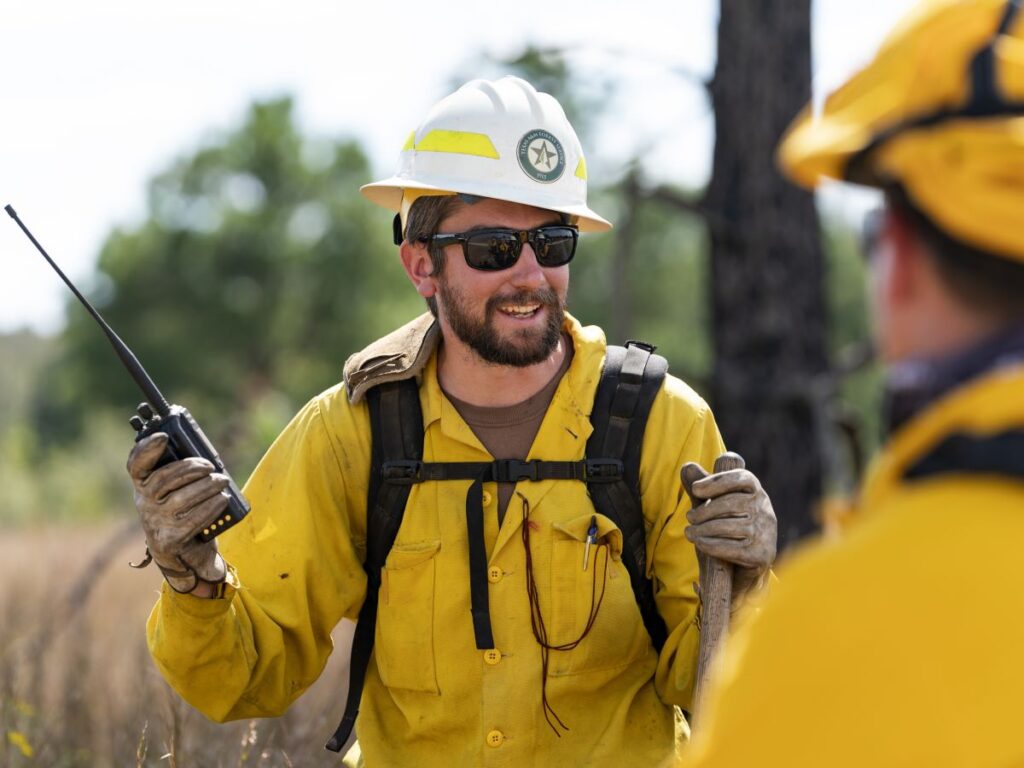Wildfire Risk
It’s important to be aware of your wildfire risk. Rapid population growth into the wildland urban interface, where wildland meets developed land, along with more frequent elevated wildfire conditions increases the risk for devastating wildfires in Texas.
Learn your risk for wildfire and take action to mitigate it.
Texas Wildfire Risk Assessment Portal
We developed the Texas Wildfire Risk Assessment Portal (TxWRAP) to provide data that can be used as a foundation for wildfire mitigation and prevention planning across Texas.
TxWRAP is an online, statewide planning tool that provides reference information, maps, reports, and statistics. Find resources to help prepare your home ignition zone, home hardening, fire-resistant landscaping, grants, and other mitigation tips.

Texas Wildfire Risk Explorer
An important tool in TxWRAP is the Texas Wildfire Risk Explorer. The information can assist in prioritizing areas of the state where community outreach and education, mitigation treatments, or additional tactical analysis might be necessary to reduce wildfire risk. The information can also be included in your Community Wildfire Protection Plan or other wildfire mitigation plans.

Texas Wildfire Risk Explorer provides assessments and information on:
Wildfire risk
Functional wildland urban interface (WUI) – Represents a classification of the land near buildings into zones that describe the wildfire risk mitigation activities appropriate for each zone.
Housing unit density – Displays housing unit density measured in housing units per square kilometer.
Housing unit impact – Incorporates housing unit counts with the general consequences of fire on a home as a function of fire intensity.
Housing unit risk – Represents risk to housing units and combines housing-unit counts with wildfire likelihood and potential consequences to homes as a function of fire intensity.
Sources of ember load to buildings – a relative index of the potential for fuel to produce embers that land where buildings are located, given that a fire occurs. It is useful for prioritizing mitigation actions to reduce the potential for ember damage to buildings.
Landscape characteristics
Surface fuels – Surface fuels include grass, timber litter, shrub/brush, slash, and other dead or live vegetation within six feet of the ground.
Percent slope – Measures the rate of change of elevation over a given horizontal distance. Steep local conditions can severely restrict the movement of equipment and resources for suppression and intensify fire behavior.
Landforms – Provides a general characterization of topographic features that may impact suppression resources.
Flame front characteristics
Characteristic fire intensity scale – Identifies where significant fuel hazards and associated dangerous fire behavior potential exist.
Characteristic rate of spread – Represents the rate of spread as determined by fuel and weather characteristics.
Characteristic flame length – Represents the flame length (in feet) as determined by fuel and weather characteristics.
Probability of crown fire – The likelihood of the head of the fire experiencing crown fire. Crown (or canopy) fires are very dangerous, destructive, and difficult to control due to their increased fire intensity.
Challenges to fire operations
Probability of exceeding manual control – The likelihood that flames at the head of the fire will exceed four feet, which is generally considered the limit for manual fire control.
Probability of exceeding mechanical control – The likelihood that flames at the head of the fire will exceed eight feet, which is considered the limit for mechanical fire control in fire operations.
Probability of extreme fire behavior – The likelihood that flames at the head of the fire will exceed 11 feet, which is considered threshold for extreme fire behavior in fire operations.
Suppression difficulty index – Used to inform fire management decisions related to suppression strategies and resource placement.
Wildfire hazard potential – Useful for long-term planning purposes. Potential is mapped within eight classes, with the highest classes indicating areas with fuels more prone to experiencing extreme fire behavior during severe fire-weather conditions.
Ember characteristics
Conditional ember production index – Provides a relative index of embers produced at a location, given that a fire occurs.
Conditional ember load index – Provides a relative index of embers received at a location, given that a fire occurs.
Historical wildfire occurrence
Wildfire ignitions – Shows the point location of reported fires from 2005 – 2021. The fires are symbolized by the cause of the fire.
Large wildfires – shows the point location of all fires greater than 500 acres from 2005 – 2015.
Key priorities
- Identify areas most prone to wildfires.
- Identify areas that may require additional tactical planning such as mitigation projects and Community Wildfire Protection Planning.
- Provide information necessary to justify resource, budget, and funding requests.
- Allow agencies to collaborate to better define priorities and improve emergency response, especially across jurisdictional boundaries.
- Increase communication with residents and the public to address community priorities and needs.
- Plan for response and suppression resource needs.
- Plan and prioritize hazardous fuel treatment programs.